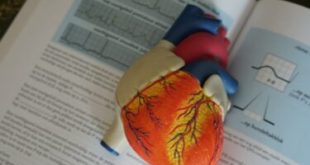Cancer is a disease where the cells of an organ multiply abnormally and infiltrates into surrounding healthy tissues. With some major advancements in cancer care and with early detection, it is now possible to shrink the cancer cells or completely stop the progression of cancer. But, treatment of cancer may sometimes affect the surrounding healthy body tissues, causing damage to the normal tissues in your skin, nerves and bones. Cancer surgery and radiation can affect body parts lying next to the tumour and may change the appearance. This could have a significant impact on the patient’s quality of life and mental state. This is when reconstructive surgery can play a vital role in rectifying the parts damaged due to cancer treatment and enhances one’s physical and psychological well-being.
What is reconstructive surgery?
A surgery that repairs parts of the body damaged and affected due to cancer treatment or birth defects or defects due to some kind of injury is known as reconstructive surgery. This kind of surgery basically rebuild a body part that has been damaged or destroyed. It not just restores one’s body following a cancer surgery or radiation therapy but also boosts one’s comfort and self-confidence.
Role of reconstructive surgery in cancer treatment
Reconstructive surgery plays a vital role in cancer treatment and recovery from the treatment. Reconstructive surgeons are well trained to perform any kind of cancer-related procedures – from head to toes like breast reconstruction, facial reconstruction, skin, tendon and bone grafting, scar revisions and also treating and restoring areas damaged due to radiation and chemotherapy.
It is essential to integrate a reconstructive surgeon on the cancer treatment team from the very first stage of treatment planning. Most of the time in case of cancer patients, a reconstruction surgery involves multiple procedures conducted in stages in order to ensure optimal results.
Various kinds of reconstruction surgery performed on cancer patients
There are several kinds of reconstruction surgeries performed among cancer patients depending on their requirements, type of cancer they are suffering from, the areas that are damaged and more. Here are some of the common reconstructive surgeries performed on cancer patients.
Breast reconstructive surgery:
In today’s world, treating breast cancer without offering the chance of breast reconstruction makes the whole effort grossly incomplete. Loss of one’s body part results in unparallel psychological and emotional impact. We are in an era were the advances in treatment of breast cancer have significantly improved the survival rate. Hence, the primary hurdle for these patents is the long term impact of body disfigurement. This is where a team of well-trained and ethically sound onco-surgeons and plastic surgeons make a difference.
A comprehensive treatment of breast cancer includes the whole spectrum of surgeries including oncoplastic breast reconstruction, autologous whole breast reconstruction and implant based reconstruction. We go well beyond the conventional treatment of breast cancer to provide with some world class results. Autologous tissue (Free DIEP) based ‘whole breast reconstruction’ is a highly specialised surgery that gives the most aesthetic and natural outcome with an added advantage of abdominoplasty.
Skin, tendon and bone grafts: In these cases, the surgeon moves and transplants healthy tissues from another body part to the area that requires a repair.
Local flap surgery: In such a surgery the tissue from a nearby area is used to cover the damaged area. During the procedure, the tissue remains attached to the body’s blood supply thereby speeding up the healing process and reducing scarring.
Artificial implants: An artificial body part is implanted to the body in these surgeries. An implant can be available for a breast, testicles or penis that have been removed as part of cancer treatment. In case of jaw reconstruction among patients with oral cancer, the surgeon uses a 3D printer to build an implant which is placed in the body through a surgery.
Scar revisions: This kind of reconstructive surgery repairs scars that have been obtained from earlier surgeries.
Lymphedema Surgery
Approximately 25% (13 to 52%) of breast cancer patients with axillary nodal excision develop lymphedema and even 6% of patients post axillary sampling. The Incidence increases drastically following radiotherapy and chemotherapy. Lymphedema results in major functional and cosmetic deformity, which has financial and psychological impact in the life of a patient treated for breast cancer. With the development of microsurgery and reconstructive plastic surgery it is possible to prevent such major complications. Lymphatic Microsurgical Preventive Healing Approach (LYMPHA) is a prophylactic surgery in patients undergoing axillary dissection for carcinoma breast. Patients with existing lymphedema can be offered procedures like Vascularized lymph node transfer and lymphovenous anastomosis to control the swelling and improve quality of life.
Benefits of reconstructive surgery
● Reconstructive surgery rectifies the deformities and scars left behind by cancer treatment, thereby improving the quality of life among cancer patients, both physically and mentally.
● It enhances self confidence and gives a boost to one’s ability to return to normal flow of life.
● Reconstructive surgery in case of breast, head and neck cancers can provide a life changing experience to patients and help in speeding up the recovery process.
Reconstructive surgery plays a vital role in cancer treatment and helps cancer patients to overcome the pain of deformities and low self-esteem. To opt for the appropriate reconstructive surgeries, reach to the specialists and live a life worth living after cancer.
Dr. Bharat Saxena, Consultant Plastic Surgeon, HCG ICS Khubchandani Cancer Centre Mumbai
 Newspatrolling.com News cum Content Syndication Portal Online
Newspatrolling.com News cum Content Syndication Portal Online







